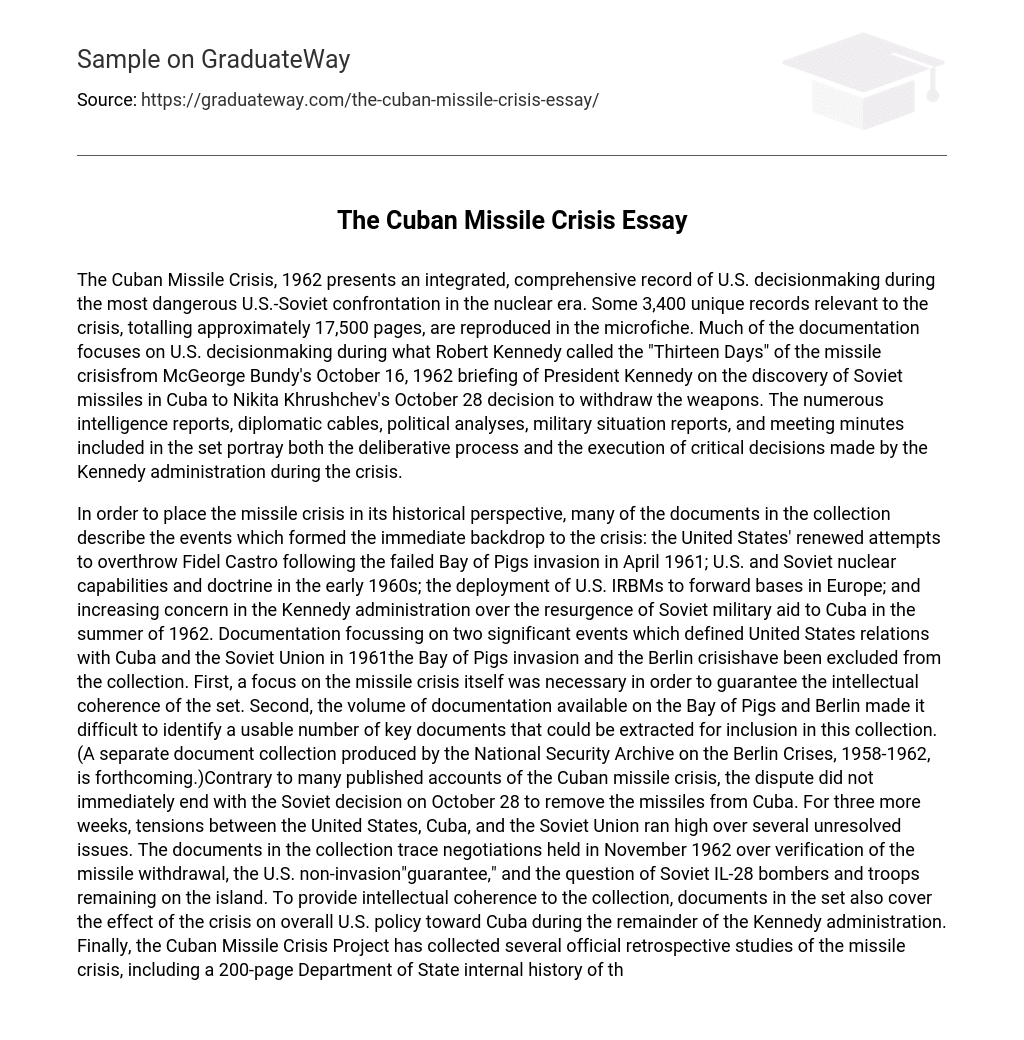The Cuban Missile Crisis, 1962 presents an integrated, comprehensive record of U.S. decisionmaking during the most dangerous U.S.-Soviet confrontation in the nuclear era. Some 3,400 unique records relevant to the crisis, totalling approximately 17,500 pages, are reproduced in the microfiche. Much of the documentation focuses on U.S. decisionmaking during what Robert Kennedy called the “Thirteen Days” of the missile crisisfrom McGeorge Bundy’s October 16, 1962 briefing of President Kennedy on the discovery of Soviet missiles in Cuba to Nikita Khrushchev’s October 28 decision to withdraw the weapons. The numerous intelligence reports, diplomatic cables, political analyses, military situation reports, and meeting minutes included in the set portray both the deliberative process and the execution of critical decisions made by the Kennedy administration during the crisis.
In order to place the missile crisis in its historical perspective, many of the documents in the collection describe the events which formed the immediate backdrop to the crisis: the United States’ renewed attempts to overthrow Fidel Castro following the failed Bay of Pigs invasion in April 1961; U.S. and Soviet nuclear capabilities and doctrine in the early 1960s; the deployment of U.S. IRBMs to forward bases in Europe; and increasing concern in the Kennedy administration over the resurgence of Soviet military aid to Cuba in the summer of 1962. Documentation focussing on two significant events which defined United States relations with Cuba and the Soviet Union in 1961the Bay of Pigs invasion and the Berlin crisishave been excluded from the collection. First, a focus on the missile crisis itself was necessary in order to guarantee the intellectual coherence of the set. Second, the volume of documentation available on the Bay of Pigs and Berlin made it difficult to identify a usable number of key documents that could be extracted for inclusion in this collection. (A separate document collection produced by the National Security Archive on the Berlin Crises, 1958-1962, is forthcoming.)Contrary to many published accounts of the Cuban missile crisis, the dispute did not immediately end with the Soviet decision on October 28 to remove the missiles from Cuba. For three more weeks, tensions between the United States, Cuba, and the Soviet Union ran high over several unresolved issues. The documents in the collection trace negotiations held in November 1962 over verification of the missile withdrawal, the U.S. non-invasion”guarantee,” and the question of Soviet IL-28 bombers and troops remaining on the island. To provide intellectual coherence to the collection, documents in the set also cover the effect of the crisis on overall U.S. policy toward Cuba during the remainder of the Kennedy administration. Finally, the Cuban Missile Crisis Project has collected several official retrospective studies of the missile crisis, including a 200-page Department of State internal history of the crisis, comprehensive reports describing the actions of military commands and units during the missile crisis, and records relating to reviews of the Kennedy-Khrushchev understanding produced in the 1970s and 1980s





